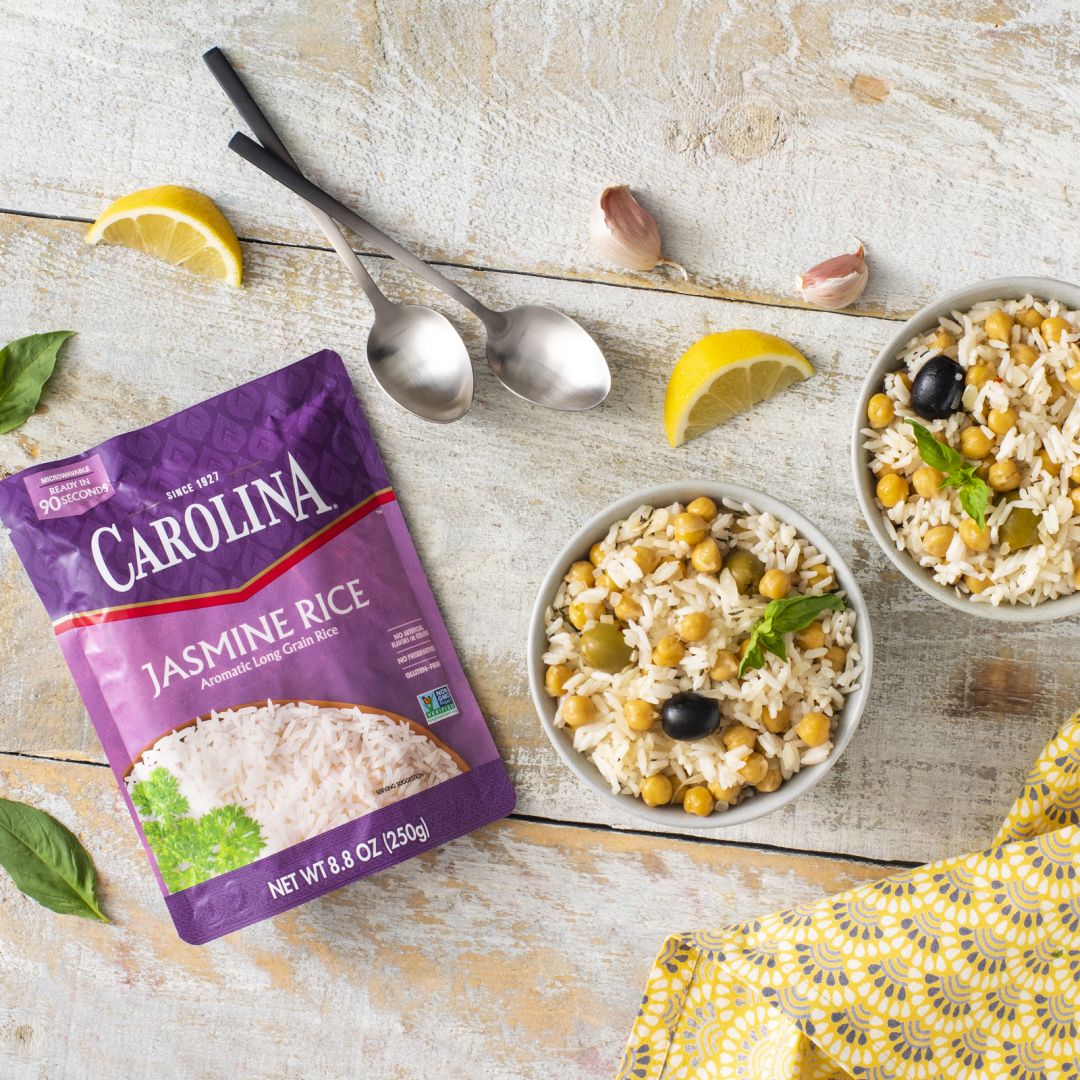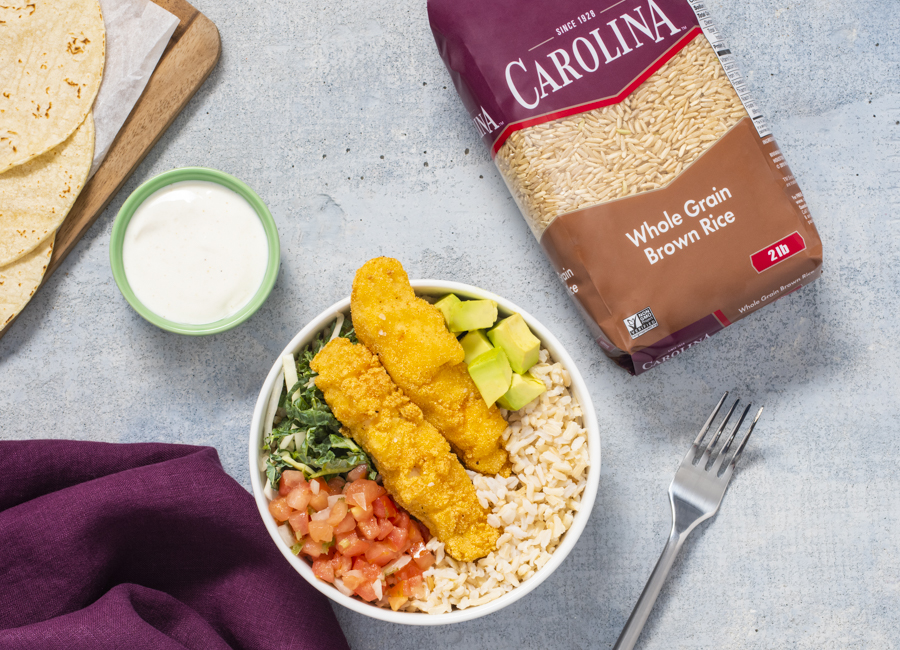
Mediterranean Style Rice Bowl
Instructions
Enjoy all your favorite Mediterranean flavors…in a bowl!
Step 1-In a large skillet set over medium heat, add oil. Cook onions and garlic for 3 to 4 mins or until starting to soften. Stir in olives, thyme and chili flakes. Cook for 5 to 8 mins or until well coated and fragrant.
Step 2
Stir in rice, chickpeas, lemon juice and 2 tbsp water. Cook, stirring often, for 10 to 12 mins or until rice and chickpeas are heated through.
Step 3
Season with salt. Stir in basil. Garnish with lemon wedges.
Recipe Tip
Turn recipe into a power bowl by topping with tomatoes, cucumber, chicken, and avocado.
About Thyme
Thyme is a fragrant herb with small, bitter leaves and thin, woody stems. At most stores, this herb is easily accessible all year long in both fresh and dried forms. It has long been a staple of Mediterranean and southern European cuisines.
Thyme goes well with steak, beans, and tomatoes. It is the main ingredient in the classic French herb blends Bouquet Garni and Herbes de Provence. These herb concoctions are often used to flavor meat, stews, and soups. Thyme is frequently used in Mediterranean cooking style and aids in helping the taste of lamb be less gamey. The main ingredient in Za’atar, a popular herb blend used in Mediterranean cuisine, is thyme. Thyme is additionally used to improve tea, cheese, and lentil meals.
Thyme goes so well with eggs, tomatoes, and cheese that it is a perfect addition to omelets and egg strata. This herb is a fantastic way to season poultry and may be found in a variety of chicken seasonings.
Using Fresh Thyme
Fresh thyme leaves can either be added as a whole with the stalk or detached from the stem and sprinkled on top of a dish. If a recipe calls for it, the leaves and stem should be kept on a “sprig” of thyme. When thyme is added to soups, stews, or other recipes during cooking, the leaves typically fall off the entire sprig, and the woody stem can be removed before serving.
Preparation
When “fresh thyme” is called for in a recipe, the leaves and stem must be separated. To take the leaves off a sprig of fresh thyme, just grasp the sprig at the top with one hand, squeeze the sprig at the top with the other hand, and then slide those fingers down the stem, taking off the leaves as you go. The leaves will separate with ease. Because fresh thyme leaves are so small, they are often not necessary to cut. This is the exception because it can be too difficult to remove the leaves off a young, flexible stem. It is acceptable to chop the entire sprig and add it to the recipe in this instance.
Unlike many other types of fresh herbs, fresh thyme can be added early on in the recipe. The herb withstands and benefits from long cooking times, and will slowly infuse its flavor into the dish.
Purchasing and Keeping Thyme
When thyme is fresh or dried, it is marketed and kept in numerous ways. Thyme is frequently purchased in bunches or as a group of sprigs packaged in a plastic clamshell container. To maintain their ability to withstand refrigeration, the fresh sprigs should be kept in the original plastic clamshell container or loosely wrapped in plastic. When properly maintained, fresh thyme will remain vibrant for one to two weeks.
The majority of sizable stores always stock dried thyme. Dried thyme should be stored in an airtight container away from heat and light. When properly preserved, dried thyme should retain its flavor and potency for up to a year. Try some in our Fried Mushroom and Thyme Risotto.


 2
2  20 mins
20 mins 


